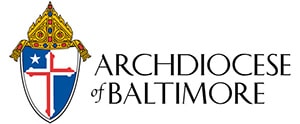Last week St. Augustine Church in Washington, D.C., celebrated its 150th anniversary. St. Augustine is often referred to as the “Mother” Church of black Catholics in Washington. (When it was founded, St. Augustine was part of the Archdiocese of Baltimore).
The founding of St. Augustine Church was intertwined with a school and a chapel. The school and chapel acted as the “roots” which resulted in the growth of St. Augustine Church. With this firm foundation St. Augustine has served black Catholics in their religious and educational endeavors for 150 years. St. Augustine grew out of a need for schooling of the newly emancipated slave. The chosen site of the federal city of Washington was already served by the Jesuits. In 1860 there were many Catholic African-Americans who resided in Washington. Many of them attended St. Peter Church on Capitol Hill, others Holy Trinity Church in Georgetown. Father Charles White of St. Matthew Church noticed the need for a school for the colored children in the northwest. As his idea became a reality, he gained permission to proceed with his work in 1864. President Abraham Lincoln granted the colored Catholics permission to use the lawn of the White House for a fundraising festival on July 4, 1864. Previous to this, the group had purchased a lot on 15th Street between L and M Streets. A brick schoolhouse was built, and a wooden edition was added to serve as chapel.
The small chapel eventually became known as St. Augustine Chapel. The first service was held there on Feb. 11, 1866. The chapel opened under the patronage of Blessed Martin de Porres, who was a colored lay brother of the Order of St. Dominic. The parishioners wanted the newly built chapel to be named St. Augustine after the old chapel, but it was discovered in the canons of the church that this could not be done. The church was dedicated under the name of St. Augustine. Father White was appointed the pastor of the chapel with Jesuits of Georgetown as his assistants.
In the meantime, the black Catholic population was increasing, Archbishop Martin John Spalding of Baltimore requested another priest to assist him. Help came from Genoa, Italy. When the two priests arrived from Italy, they were sent to St. Charles College in Ellicott City to study the English language. Later Father Felix Barrotti was appointed as pastor. He proved to be a satisfactory administrator as well as sincere religious leader.
A magnificent church was built on L Street and dedicated June 11, 1876. St. Augustine became the mother church of all colored Catholics in Washington, D.C. A temporary schoolhouse and chapel was used while the church was under construction. Father Barrotti served St. Augustine until May 1, 1881, when he died suddenly.
Archbishop Spalding requested the Society of St. Joseph, the Mill Hill fathers, to take over the operation of St. Augustine Parish. Father Michael Walsh, a Josephite priest was appointed in 1881 and resigned in 1892.
The first African-American Conference of St. Vincent de Paul Society was established at St. Augustine in 1888. The Sodality of the Blessed Virgin Mary was founded in May 1892. The first National Black Catholic Congress was held at St. Augustine Catholic Church in Washington, D.C., Jan. 1, 1889, with a Mass celebrated by Father Augustine Tolton, the first colored priest in the nation. After the conference, the group of about 100 black men was invited to the White House to meet with President Grover Cleveland.
St. Augustine made steady progress in education and liturgy. In 1928, the church purchased another piece of land that they intended to be a school. They were able to construct a school, a rectory and a convent. A new St. Augustine Church started to be built. In the meantime the church activities were held at the original building on 15th street. This building was used until 1946 when it was sold to the Archdiocese of Washington.
St. Augustine Church owes its existence to a congregation of love for its God, its leaders, its willing workers and its determination to survive.
Agnes Kane Callum is a noted historian and parishioner of historic St. Francis Xavier Church.

